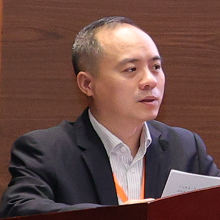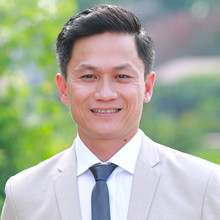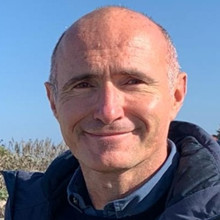Speech title "Exploration and Practice of Digitization and Intelligentization in Urban Rail Transit"

Speech title "Exploration and Practice of Digitization and Intelligentization in Urban Rail Transit"

Speech title "Recent advances in the understanding of coastal microplastic transport"
Abstract-Microplastic transport in coastal environments involves
complex interactions between hydrodynamics, particle properties, and
seabed conditions. Recent advances have substantially improved our
understanding of these processes through a coordinated series of
experimental studies addressing particle incipient motion, settling
behavior, and both buoyant and non-buoyant transport induced by
waves.
New flume experiments on 57 regular and eight irregular particle
groups have yielded a unified framework for predicting incipient
motion conditions of microplastics. The work is the first to
reconcile microplastic incipient motion with the classical Shields
diagram, by explicitly accounting for static friction, hydraulic
roughness, and hiding–exposure effects. Complementary measurements
of settling velocity for 66 particle groups, spanning a wide range
of Reynolds numbers, have produced improved drag formulations for
both regular and irregular shapes. The work is the first to
uniformly account for preferential settling orientation, which
greatly simplifies parameterization. The resulting parameterizations
outperform existing predictive approaches and are shown to be
equally applicable to natural sediments.
Further experiments have clarified the mechanisms governing
cross-shore transport of both buoyant and non-buoyant microplastics
under irregular waves. From experiments involving buoyant
microplastic particles, beaching times and Lagrangian transport
velocities have been quantified in both pre-breaking and surf zones,
revealing that transport velocities scale with the local wave field
and depend systematically on the particle Dean number (a
dimensionless settling velocity). For denser, non-buoyant particles,
controlled laboratory tests over plane and barred profiles
demonstrated distinct accumulation hotspots: offshore of the breaker
bar, at the bar crest, across the inter-bar plateau, and on the
beach, corresponding to three characteristic Dean number regimes.
The results highlight the role of wave breaking type, particularly
plunger-type breakers, in governing both onshore and offshore
transport.
Collectively, these studies establish a physically consistent basis
for predicting the mobility, settling, and nearshore transport of
diverse microplastic particles, bridging the gap between sediment
transport theory and the emerging field of coastal microplastic
dynamics.

Speech title "Bridging Quantum Science and Maritime Engineering: Opportunities and Frontiers"

Speech title "Wave Forces on Vertical Breakwaters"
Abstract-Composite vertical breakwaters are key structures for
port protection in deep-water environments. However, current design
methods often fail to capture the complex hydrodynamics introduced
by non-standard configurations, such as retreated wave walls.
Previous studies have shown that wall retreat can reduce forces on
the caisson trunk while increasing impulsive loads on the crown
wall, yet the governing mechanisms remain poorly understood. In
particular, post-overtopping flows—well documented in naval “green
water” research—play a crucial role in these dynamics but have
rarely been investigated in coastal engineering contexts.
This study presents a new 2D experimental campaign specifically
focused on post-overtopping flows over composite vertical
breakwaters with retreated wave walls. A two-stage methodology was
adopted: first, flow types (Dam Break, Plunging–Dam Break, and
Hammer–Fist) were classified on caissons without a wall; then,
representative cases were reproduced under varying wall retreat
configurations. Advanced image-clustering analysis was used to
characterize intra-wave processes such as air entrainment and bubble
dynamics, while direct pressure measurements quantified impact loads
on the wall and superstructure.
The experiments demonstrate how flow type, wall retreat, and
aeration levels jointly control the magnitude and spatial
distribution of wave-induced loads, providing new insight into
impact mechanisms. A comprehensive parameter map—developed in the
spirit of the PROVERBS design framework—links flow classification to
key geometric and hydrodynamic parameters. These results constitute
the first systematic mapping of post-overtopping dynamics on
retreated-wall breakwaters, bridging the gap between offshore “green
water” research and coastal engineering, and offering practical
guidance for optimizing breakwater performance while reducing
construction and maintenance costs.